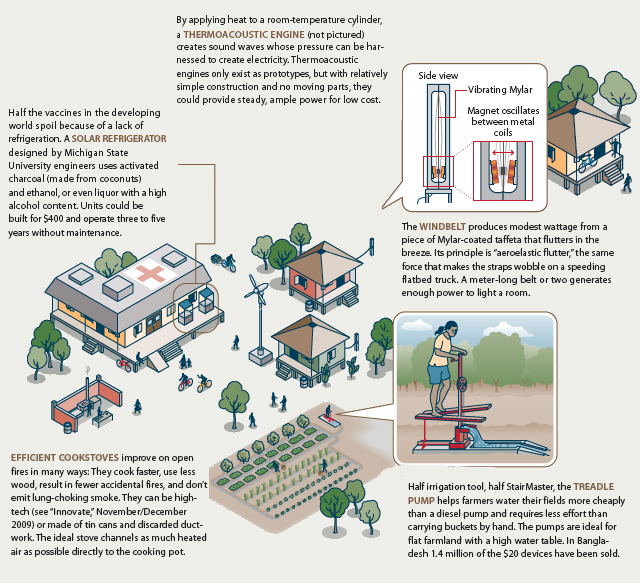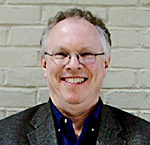sierraclub.org - sierra magazine - march/april 2010 - innovate


Innovate | Energy for the developing world
WITH 1.6 BILLION PEOPLE LIVING OFF THE GRID, the financial and environmental costs pile up quickly. Residents of the
world's poorest nations sometimes spend a third of their income on kerosene, a fuel that poisons lungs and poses a fire
hazard; a kerosene lantern emits 550 pounds of carbon dioxide every year. Battery-powered lights are an option, but could
result in mountains of tiny cylinders of toxic waste. Inexpensive devices that harness the sun and wind can supply small
amounts of power, come from local materials, and create local jobs. The developing world's population is expected to grow
by 2.5 billion over the next 40 years, so these innovative energy savers can't come soon enough.

 In 2004 John Barrie was riding a bus through the highlands of Ecuador, watching villages pass by, when he realized that "no one designs for poor people."
In 2004 John Barrie was riding a bus through the highlands of Ecuador, watching villages pass by, when he realized that "no one designs for poor people."
The villagers' appliances were old and inefficient, and they consumed more power than most Ecuadorans could afford. Farmers cadged a few hours of TV by wiring a set to a castoff car battery. "Everything these people use is designed for someone else," Barrie says. "It's all designed for rich people."
A tinkerer since the fifth grade, when he outfitted go-karts with old lawnmower engines, Barrie was an architect before turning to low-budget design. Long before energy efficiency was cool, he snuck extra insulation into office designs. In 1992 he established a green-building firm, and in 2005, after his epiphany in Ecuador, he founded a nonprofit called the Appropriate Technology Collaborative.
Barrie divides his time between his home in Ann Arbor, Michigan, where he fiddles with prototypes, and the mountain hamlets around Quetzaltenango, Guatemala, where he field-tests his inventions--like the thermoacoustic engine that he hopes will pump out electricity at $2 per watt and a solar panel that can power lights, run a radio, and charge a cell phone. He has observed firsthand how just a few hours of electric light can transform the lives of farmers in Guatemala's rural communities. Villagers can see well enough after dark to do needlepoint. Children have time for homework.
"There are 200,000 people in the world designing cell phones, and 20 people in the world designing things for the 2 billion poor people on the planet," Barrie says. "I have a lot of clients." —David Ferris
Infographic: Brian Kaas